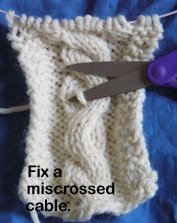.
Aster.
Bees on the "Autumn Joy" -- honey, and bumble.
Closer look at the honeybee.
I have no idea what this is.
I realized I was confused about which are coreopsis and which are cosmos. I looked it up, and the differences are subtle and involve part names I didn't recognize. So this is one or the other..........
Rose hip. With spikes.
Black-eyed Susan.
I think this is a chrysanthemum.
Gallardia
Cosmos, or coreopsis.
Spent cup plant flower.
This cup plant has kindly provided one flower with petals, to remind us what they look like at that stage.
Phlox.
Lily of the valley seed pods.
I haven't recommended a book for a while. This one is really interesting and well written.
It's been long enough that I can't remember the numbers. But I remember concepts.....
Our
bodies are formed from a LOT of cells. The estimates are in flux, as
we learn more and more about our bodies. Let's say the number is
something like 37 trillion. The number of microbes on us, and in us, is
larger. That number is even more iffy (and surely varies with the
individual person), but it is likely that each of us includes more microbial cells than
human cells.
This is relatively new knowledge, because
we can't see our microbes with our naked eyes. There are lots of them that
are hard to see with microscopes. Many of them can't live in petri
dishes. Some cannot live where there is oxygen. Some of them require each other to produce proteins they need to live and/or thrive. Studying them is complicated.
Such study is in its infancy. We don't know who they they all might be, at this point, and we only have the foggiest of a beginning of understanding how they interact with each other and with us.........
Current understanding is that the
vast majority of our microbes are benign to us, and most of them are essential
to our health and well-being. We evolved in a soup of microbes, and
some of them have partnered with us over billions of years, just as
algae and fungi partner to become lichens.
We depend on
them to help digest our food, to make vitamins for us, to protect our
skin, and hundreds (and thousands?) of other services that we are only
scratching the surface of learning about. We know that microbes in our guts communicate with our brains, and can affect our sense of well-being. We know that they affect us in dozens of ways that we are only beginning to try to comprehend.
All of the things I've learned about what goes on within our skulls have led me to think of myself as a team rather than an individual. All of the things I've learned about microbial teamwork with our human cells has amplified that thinking.
We ARE comprised of multitudes........................
All of this makes me very leery of antibiotics. At this point we have NO IDEA how we are messing ourselves up when we take broad-spectrum antibiotics. For decades antibiotics have been thought of as basically benign to humans. If they didn't know why you had a fever, it was easiest to throw antibiotics at you, and see if you got better. And, mostly, you did, so it was all good. Or so we thought.
We are learning that (surprise, surprise) "good" and "bad" are not a binary condition. For one microbic example, while Helicobacter pylori is known to have a role in causing ulcers and other gastric illnesses, Wikipedia says "Mounting evidence suggests H. pylori has an important role in protection from some diseases.[95]" including asthma, esophageal reflux, type 2 diabetes, and obesity.
At this point we do not know who our friends are, or our "frenemies" may be. We don't know who hurts us, or helps us, or under which circumstances is help or hurt likely to happen.
Killing off our microbiota with broad-spectrum antibiotics is like nuking the country to get rid of mosquitoes. We *might* get rid of mosquitoes, and the malaria they may be transmitting, but we also lose the trees, the forests, the bunnies and bears............ Some of it may recover and come back, but what have we lost that we didn't even know was there? (We have learned in the last couple of decades that we have had no idea what all is going on beneath the soil surface in a forest. A forest is much more of a community than we knew. Those trees are communicating chemically, and helping their friends, and feeding their children......... And of course there are hosts of microbes as part of the process.)
Humans have taken a very "what could possibly go wrong?" stance for much of our history. That stance has pretty much worked out for us, but I suspect we are now beginning to get a glimpse of the catastrophes we've set in motion..............................
Scary.
In the microbial realm, we are causing (and have been causing, for decades) the extinction of microbes we don't even know existed. Microbes which might have been protecting us against all sorts of things..................
.
Subscribe to:
Post Comments (Atom)


































No comments:
Post a Comment